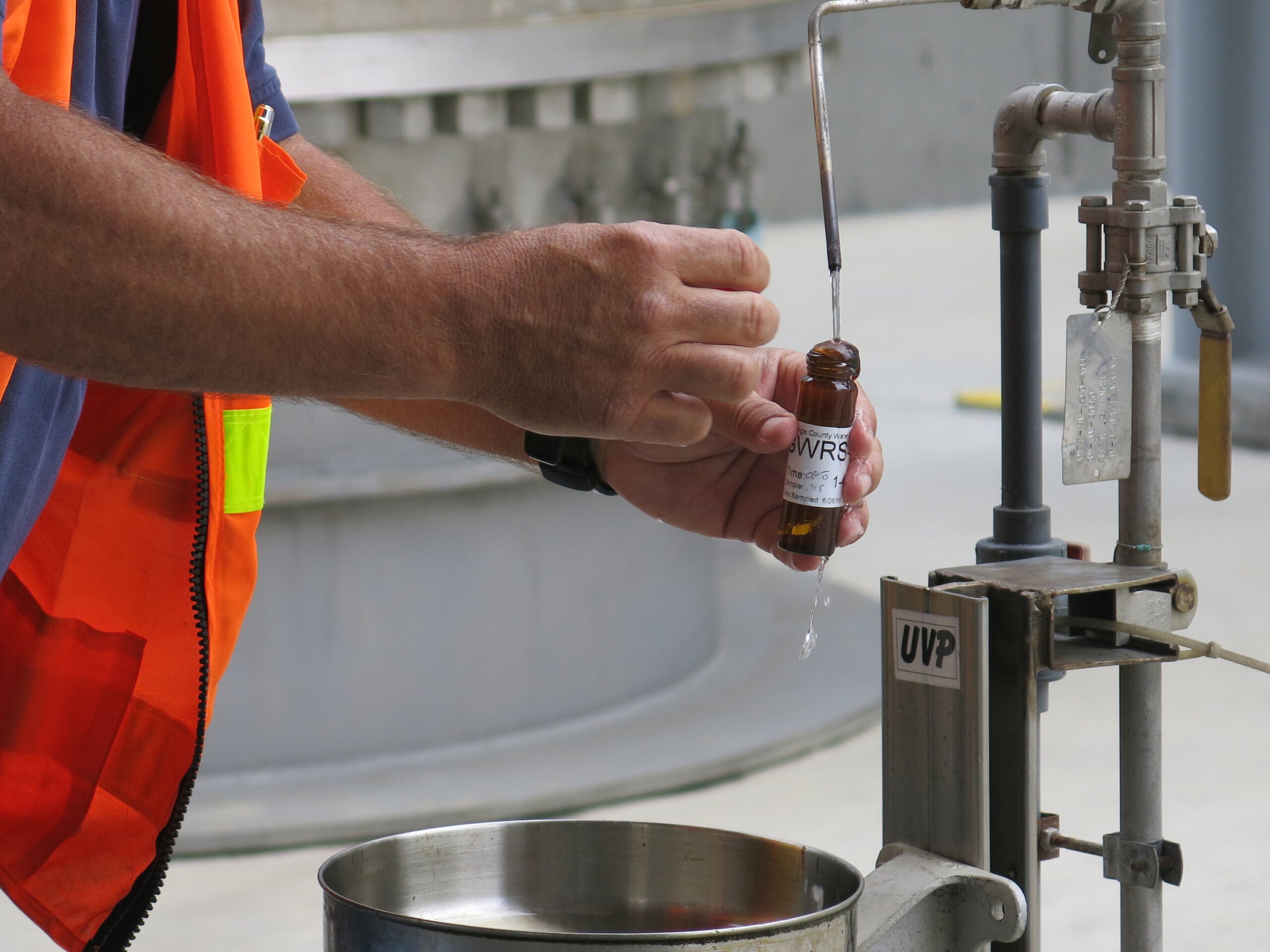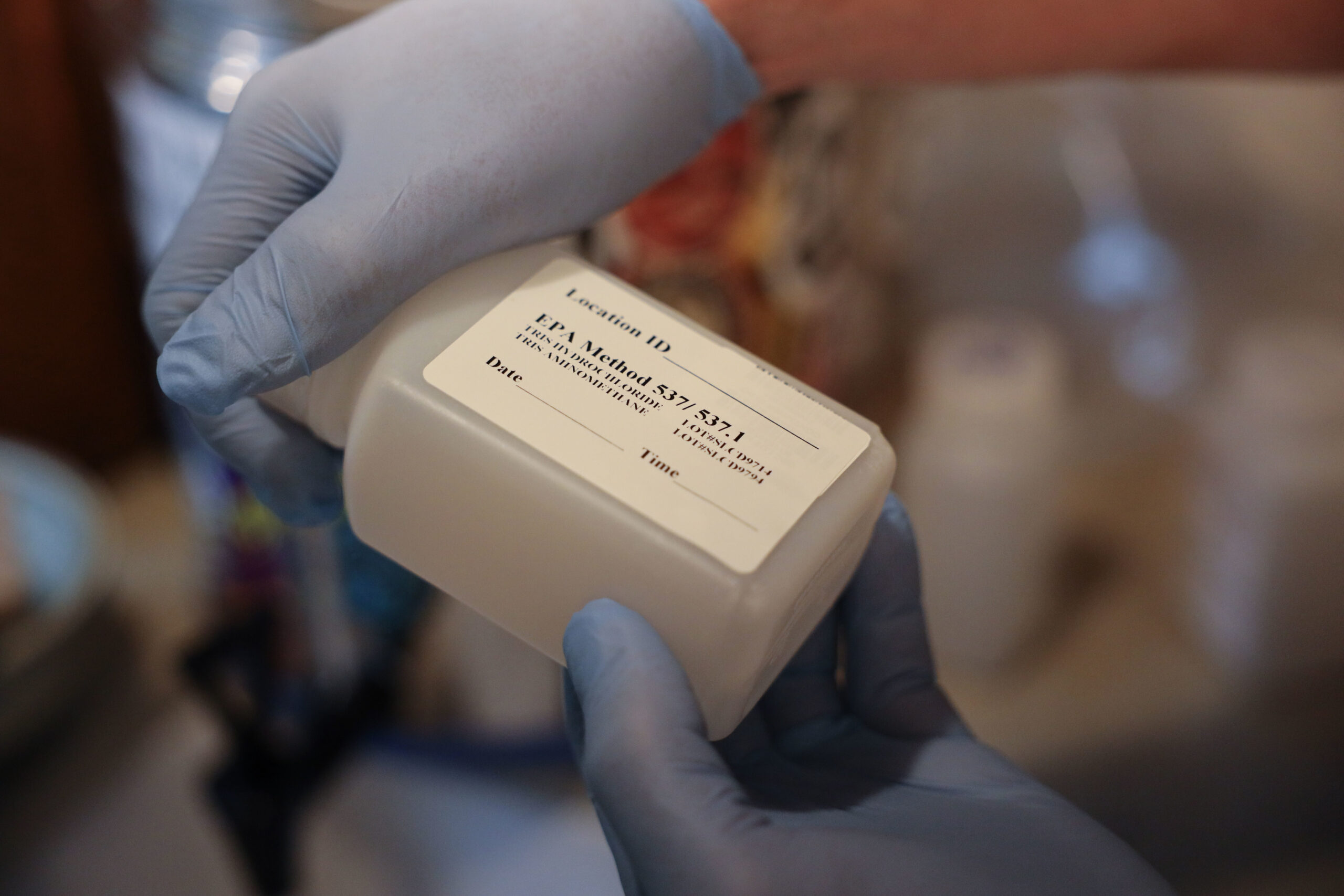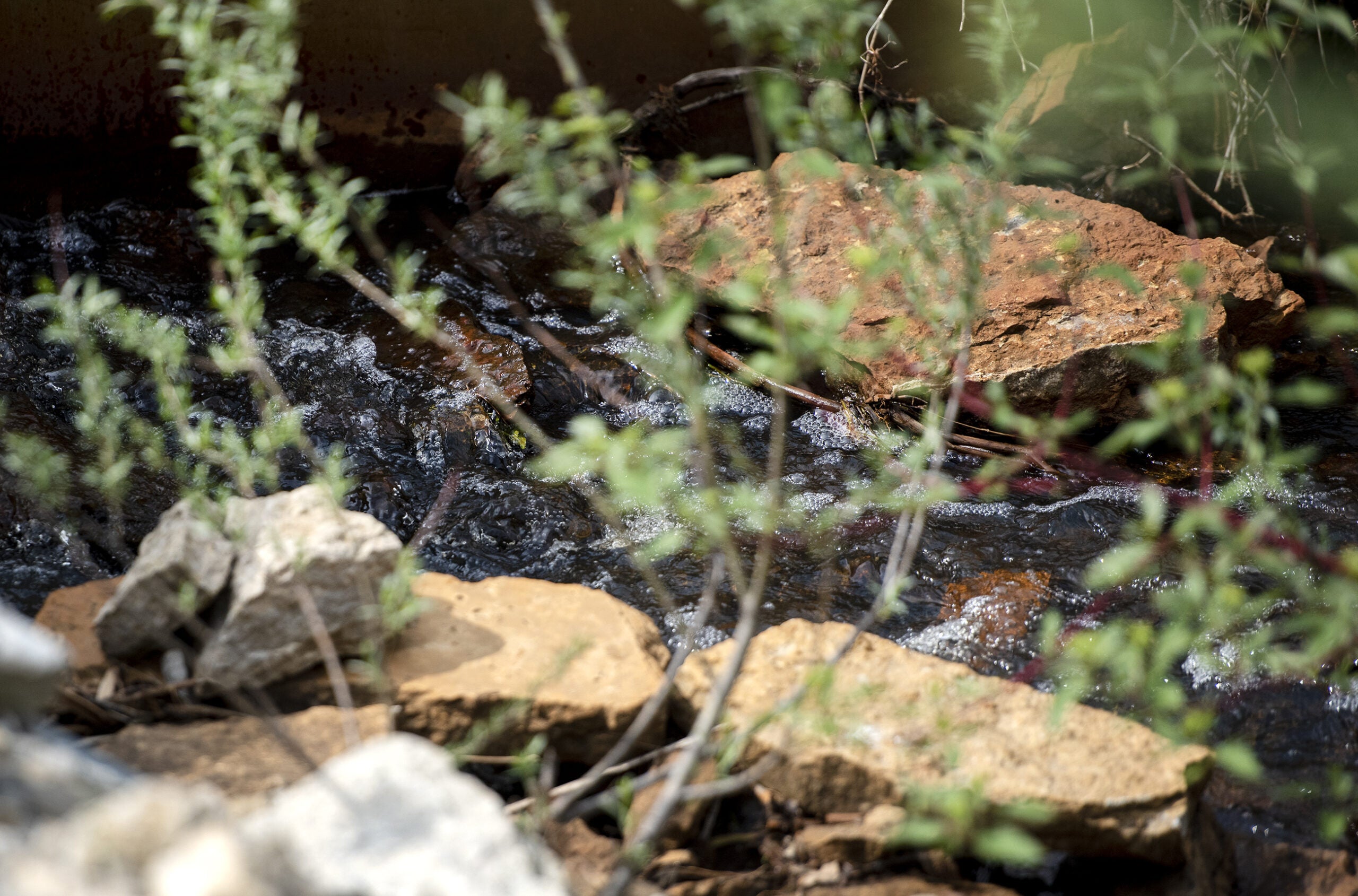Wisconsin environmental regulators are offering to test sewage sludge that’s often spread on farm fields for harmful PFAS chemicals at wastewater treatment plants.
The sampling comes as some northern Wisconsin counties are asking the Wisconsin Department of Natural Resources to require PFAS testing before applying the material on land.
The DNR is in the process of requiring PFAS sampling of sewage sludge that’s known as biosolids at permitted wastewater treatment facilities, according to Tim Ryan, field operations director for the DNR’s wastewater program. The organic material is what remains after treatment at wastewater plants. Biosolids are rich in nutrients, and they’re often applied to fields as a replacement for fertilizer.
Stay informed on the latest news
Sign up for WPR’s email newsletter.
Ryan said the sampling effort is similar to wastewater testing that was conducted as part of developing PFAS standards for surface water. If facilities are concerned and want results sooner, he said the DNR would pay for testing at both industrial and municipal plants.
“We’re trying to collect some data up front…just so we have a better idea of where we stand,” Ryan said. “So we can act a little faster.”
PFAS, short for per- and polyfluoroalkyl substances, are a class of thousands of synthetic chemicals used in products like cookware, food wrappers and firefighting foam. Research shows high exposure to PFAS has been linked to kidney and testicular cancers, fertility issues, thyroid disease and reduced response to vaccines over time.
The chemicals don’t break down easily in the environment, and their widespread use in everyday products and manufacturing processes mean they’re often found in wastewater and biosolids.
Ryan said around 60 percent of 580 municipal wastewater facilities spread biosolids on land in any given year. The agency’s interim strategy for biosolids states around 85 percent of all biosolids generated are reused on land for nutrients.
The state conducts testing of the treated sewage sludge for nutrients like nitrogen and metals to ensure that biosolids are applied safely on land without affecting groundwater. Even so, Ryan acknowledged there’s no requirement to test biosolids for PFAS.
“There’s no state or federal limits for PFAS in biosolids,” Ryan said.
The U.S. Environmental Protection Agency is currently conducting a biosolids risk assessment on two of the most widely studied PFAS chemicals: PFOA and PFOS. The assessment aims to better understand the environmental and public health risks tied to spreading biosolids that contain the chemicals. The federal agency aims to finish it by December of next year.
In the meantime, northern Wisconsin leaders are concerned PFAS contamination could stem from spreading biosolids on farm fields. Douglas and Bayfield counties passed resolutions this spring that seek to require PFAS testing of all sewage sludge spread on lands in Wisconsin.
The counties highlight that the DNR has issued a fish consumption advisory for rainbow smelt in Lake Superior due to high levels of PFAS. Douglas County Board Chair Mark Liebaert wonders if biosolids may be a potential source.
While Superior disposes of its biosolids in the city’s landfill, Douglas County’s resolution states as much as 2,213 dry tons of biosolids from the Western Lake Superior Sanitary District in Duluth were spread on up to 576 acres of land in the county from 2012 to 2021. The facility transferred 2,254 dry tons of biosolids to Wisconsin last year.
“The state should be overseeing that,” Liebaert said. “The state should make sure that whoever is putting this on isn’t contaminating their own fields, their own livelihoods, their own families.”

Danielle Kaeding/WPR
While standards are currently lacking, the DNR said they’re updating the agency’s interim plan to help wastewater plants and landowners manage biosolids that contain PFAS. Wisconsin has modeled its approach after Michigan, which published updated guidance last year. Ryan said the agency has recommended sampling, and the DNR has outlined PFAS levels in biosolids where plant operators or landowners may want to avoid or reduce rates of spreading.
The agency suggests sampling, investigating and reducing sources of PFAS to wastewater facilities for biosolids that contain more than 20 micrograms per kilogram or parts per billion. Reduced rates of spreading are recommended for biosolids that contain the chemicals at levels between 50 and 150 parts per billion.
The interim strategy states the DNR may not approve spreading sewage sludge on land when levels of PFOA and PFOS exceed 150 parts per billion, which indicates industrial sources of PFAS. Those levels are equivalent to 150,000 parts per trillion.
That threshold is much higher than the state’s drinking water standard of 70 parts per trillion, and the EPA’s proposed standards of 4 parts per trillion for PFOA and PFOS.
Even so, Ryan said PFAS levels in biosolids are measured in parts per billion because there’s less direct exposure to the chemicals than in drinking water. He said much of the PFAS remains in soil where biosolids are spread. As part of its assessment, the EPA is examining the risk of PFAS moving through soil to contaminate groundwater or being taken up by plants.
“Biosolids are not allowed to be spread on fields where crops for human consumption are grown,” Ryan wrote in an email.
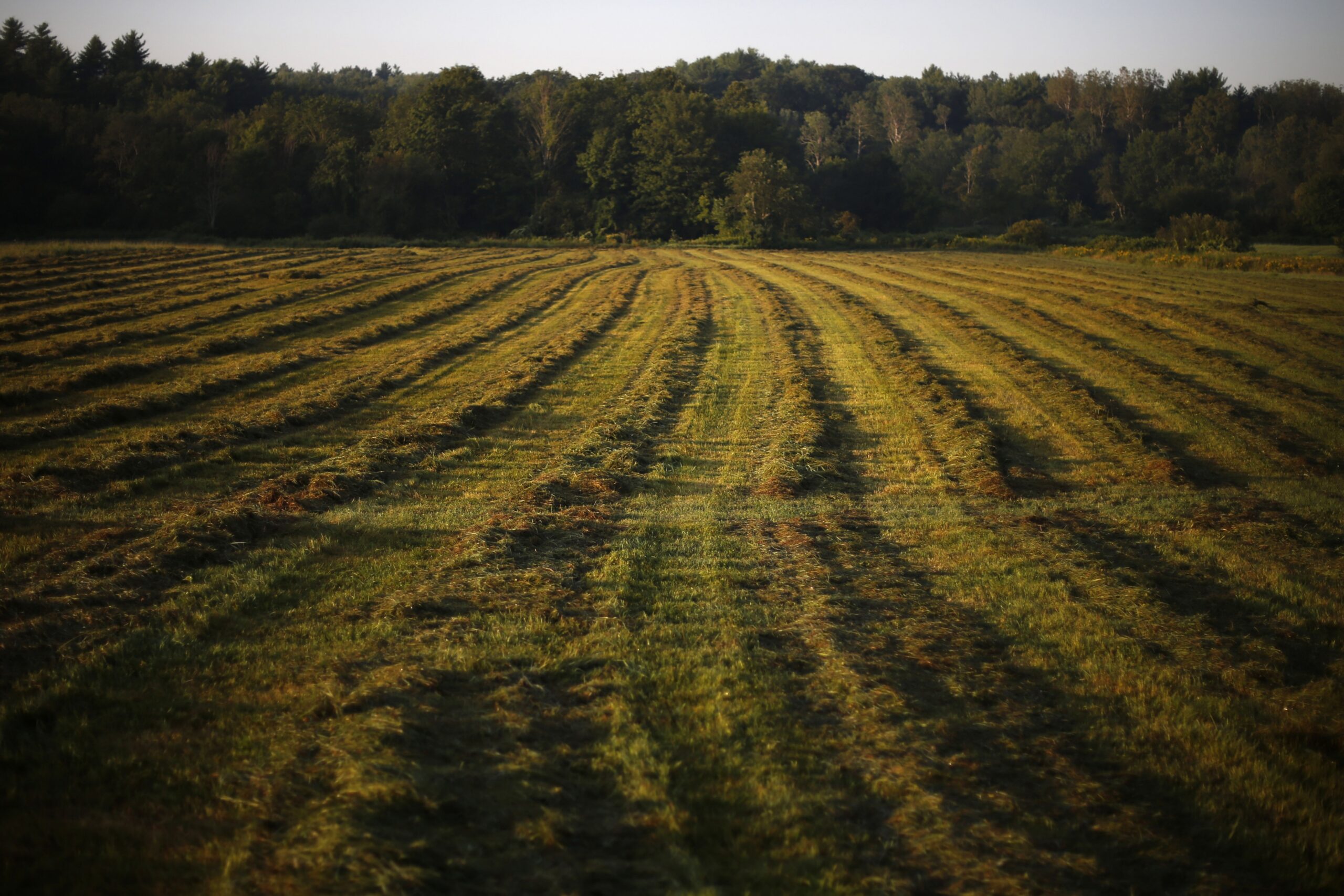
Biosolids from Duluth’s wastewater treatment plant that are spread in Douglas County were last tested for PFAS in 2007 and 2008 by the Minnesota Pollution Control Agency. Julie Macor, the facility’s director of environmental services, said the agency’s report found its biosolids had a combined level of 23 micrograms per kilogram. That’s equivalent to 23 parts per billion.
“So based on the information available, the science available at this point, our product is still an excellent product, and very low in PFAS,” Macor said.
Macor said Duluth’s treatment plant is voluntarily agreeing to sample wastewater coming into its facility for PFAS as part of Minnesota’s PFAS monitoring plan. She said the testing will examine levels for 40 PFAS chemicals, including PFOA and PFOS.
“Because if it’s coming to our plant, likely it’s either going to be leaving our plant in our effluent or in our biosolids,” said Macor.
Sen. Eric Wimberger, R-Green Bay, said the Wisconsin DNR should have required communities to conduct random testing of their biosolids for PFAS sooner. Wimberger’s district includes the Marinette and Peshtigo area, and sewage sludge from Marinette’s wastewater treatment plant contained significant levels of the harmful forever chemicals in 2017 and 2018. The DNR said that stemmed from the discharge of firefighting foam that contained PFAS to the city’s sewer system from Tyco Fire Products’ fire training facility.
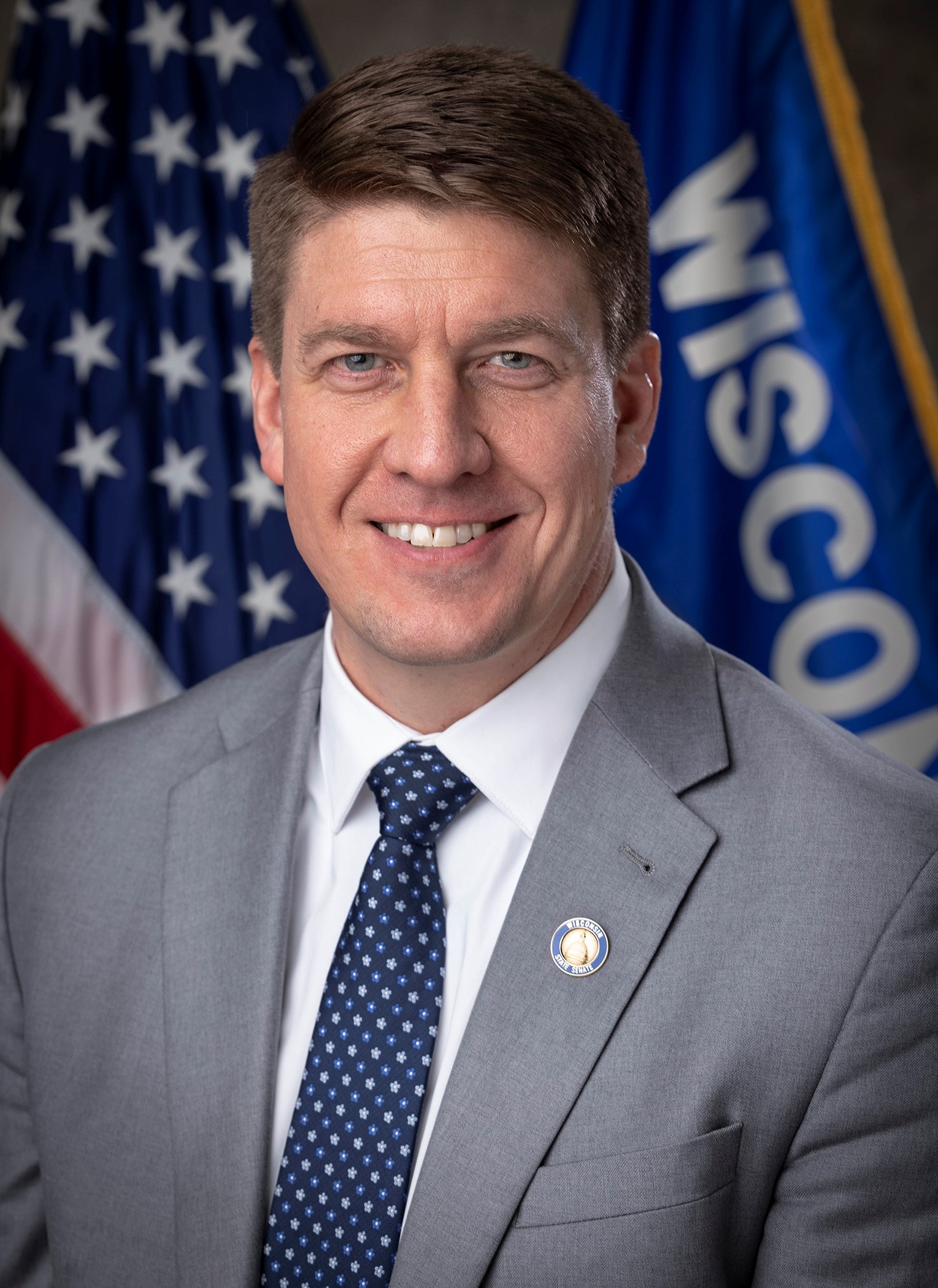
Photo courtesy of Sen. Wimberger’s office
Wimberger added that nothing is stopping the DNR from crafting rules to create standards for the chemicals in biosolids.
“They just have to have a scientific basis for it, and that’s lacking,” Wimberger said. “They should be coordinating with (the University of Wisconsin) or whoever else might be a scientific resource for them and just come up with standards.”
The DNR has encountered pushback from industry, conservatives, and Republican lawmakers who questioned the science behind the agency’s proposed standards for the chemicals. While the state has set drinking and surface water standards, efforts to pass limits for PFAS in groundwater failed last year. The agency has since restarted the process for crafting regulations in groundwater.
Speaking before the budget’s passage, Wimberger said he hoped that $125 million devoted to addressing the chemicals could be used in part to help communities test for PFAS in biosolids.
Moving forward, the DNR’s Ryan said the agency is planning to require regular PFAS sampling of biosolids under wastewater permits. While that may apply to some permits issued this fall, he said those requirements would apply to most facilities as their permits are updated beginning early next year.
Wisconsin Public Radio, © Copyright 2025, Board of Regents of the University of Wisconsin System and Wisconsin Educational Communications Board.
